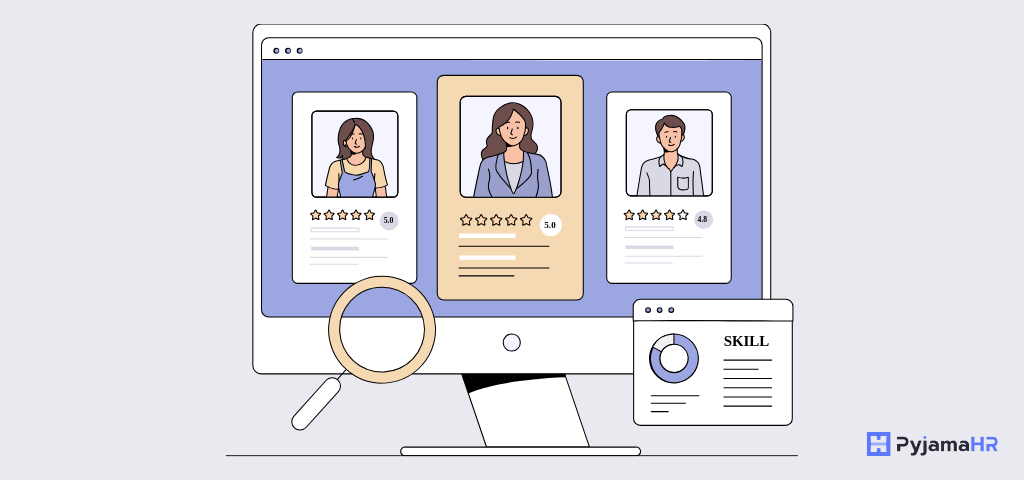In the world of hiring, where bias in interviews or bias in recruitment is often observed, fair hiring matters. Bias in recruitment is a false conclusion about candidates interviewed merely based on first impressions. Recruitment biases are mostly based on the interviewer’s interest or prejudices, where their personal judgment instead of the candidate’s qualification impacts the selection process.
Often also known as unconscious biases, they result in the rejection of qualified candidates as interviewers allow their biases to override their judgment. An example of interviewer bias would be instances where decisions are made in favor of a particular person based on race, culture, age, ethnicity, color, religion, class, caste, etc. A special type of unconscious bias is affinity bias.
“Most people aren’t actually biased or racist in a conscious, explicit way. They’re unconsciously biased.”
Wouter Durville, CEO of Test Gorilla
Employers need to simplify and be just in their hiring process and standardize it to reduce hiring prejudice. Awareness is the first step in knowing about unconscious bias.
How can we avoid or eliminate bias in recruitment? The applicant tracking system (ATS) eliminates bias in recruitment by automating and streamlining the hiring process. ATS scans the resume and finds the best talent based on skills and qualifications that match the job role. ATS does not give importance to external factors such as race, gender, identity, class, nationality, ethnicity, etc., and can easily filter 100s of resumes in no time and shortlist the top talents.

7 ways to efficiently remove bias in recruitment
Companies want to develop a diverse culture, but often manual hiring results in unconscious bias getting in the way. ATS is one such software that helps to remove bias in the recruitment process.
One cannot remove unconscious bias from human nature, but it can cause major damage to a company’s growth and productivity. Therefore, it is necessary to hire and create a team of diverse employees. With the help of ATS, combat bias in recruitment.
Some of the ways to effectively reduce recruitment bias with technology are listed below.
Avoid gendered terms
While crafting perfect job descriptions, it happens that we might use the gender implications of the words, which might have a significant impact on the hiring and recruitment process.
Often, it is observed that women naturally refrain from applying to job positions that use ‘masculine-coded’ language. Words or skills like active, confident, etc. often attract fewer women to the role or position. However, ‘feminine-coded’ words such as honest, supportive, etc. do not impact the male candidates while applying for a job role.
The application tracking systems flags off these gender-biased words while creating job advertisements. Integrating ATS into the hiring and recruiting process helps organizations and companies maintain gender equality among candidates.

Implement Blind Applications
In traditional hiring and recruiting methods, the applicants’ resumes land directly in the hands of the hiring manager, which often leads to unconscious bias. This directly impacted the top talents.
One way to address this issue is to implement ‘blind applications’. Blind applications remove details that may result in biased decisions, such as race, nationality, class, caste, age, gender, etc.
The ATS helps recruiters in the blind application process; it automates and streamlines the application process. Several startups and well-established businesses use tests that mimic the challenges of the real job itself. The recruiters then view applications and schedule interviews based on the received test scores. As a result, it highlights the platform’s highest performers, with their potential and skills. ATS eliminates any term that might cause bias.
Opt for a structured interview
Once the candidate’s resume is shortlisted, the next crucial step is the interview process. Hiring managers might be tempted to take up unstructured interviews, which makes it difficult for hiring managers to benchmark candidates. As a result, unconscious bias might creep into it. A structured interview ensures that all candidates are assessed against the same questions.
ATS helps create and structure standard questions to discern a candidate’s skills, knowledge, abilities, etc., according to the job role. Ensure that you stick to the same questions for all the candidates, as it allows hiring decision-makers to make informed comparisons. A structured interview reduces the chance of biased decisions based on the interviewer’s first impression of the candidates.
Implement diversity in management
If you are looking for a more human-based approach, consider implementing diversity in management. Interview panels with diverse managers are crucial in reducing bias in the recruitment process.
Removing unconscious bias without using technology may seem impossible, yet creating an environment where diversity is valued at all levels is appreciated and plays a major role in creating a welcoming workplace for all.
Create a team of diverse managers belonging to different ethnicity, castes, class, genders, ages, etc. Such a team can mitigate personal unconscious bias and help consider a candidate from a wider perspective. As a result, management can make a more informed decision to choose the right candidates.
Building a diverse team can help the company achieve its goals. Different minds work differently, and it can be of a lot of help in problem-solving and making decisions for the growth of the business.
Build a cross-functional interview team
Cross-functional interview teams considerably reduce recruitment bias and help eliminate prejudice. Conducting frequent meetings with the interview team to guide them and brainstorm ideas on what to look for and avoid, including potential biases, is an excellent way to avoid personal bias.
Organizations must establish strategies and plan to discuss the candidate in a debriefing meeting. This will help verify biases that may surface and may be vetted out by other interviewers. ATS helps in the interview process by scheduling, issuing notifications, sending automated emails to candidates and interviewers, and making the entire process hassle-free. Interviewers and interviewees can connect on a single platform and perform the interview process.
Set business objectives
Define the business goals and objectives as it helps everyone understand the importance of eliminating unconscious bias. Setting up business objectives also allows employees and employers to build diversity for the bottom line. Explain and conduct sessions on what diversity entails in the company.
Give an overview of race, diversity, ageism, gender, ethnicity, etc., and discuss which are underrepresented. You must set goals and metrics for each step of the candidate hiring process, interview conversion rates, and acceptances.
Communicate the success of the organization and discuss the accomplishments. Discuss how diverse employees have helped them achieve the organization’s aims.
Make data-driven decisions
One way to eliminate personal bias in recruitment process is by letting data-driven insights guide the decision-making process.
To quickly onboard new and diverse talent with the right skills, ATS uses data and predictive analytics to help recruiters find and engage with talent. ATS helps recruiters rank candidates against open positions.
Predictive analysis is the process of using historical data to make predictions about future candidates and hiring activities. The process involves collecting and analyzing data using statistics and modeling techniques.
This allows the collection of a large volume of data from different platforms and helps measure variables such as performance and engagement. ATS gathers various information from their resume, cover letter, pre-screening tests, etc., and then uses these inputs to assess if the candidate is the perfect fit.

Reducing bias in recruitment can improve profitability
Reducing hiring bias reduces the risk of bad hires, improves business profitability, and unlocks the benefits of a diverse workforce. Some ways in which reducing hiring bias can directly impact business are:
- Diverse teams are more high-performing. A team of mixed employees is often more creative and better at problem-solving. Diverse teams display a high level of cohesiveness and better team performance.
- Creative approaches to problem-solving increase the company’s growth. Employees can use their strengths and benefit from its growth. The right talent in the company is likely to consider different approaches, which result in innovative ideas.
- right candidates are good for business. Companies with the right skillset and diverse culture are likely to have above-average profitability. Such companies are more financially outperforming.
By automating the hiring process, the recruitment process can be made bias-free. Actively addressing unconscious bias in recruitment can create a fair workplace for everyone. Reduce bias, hire a diverse workforce, and have the best talents.
Frequently asked questions on recruitment bias (FAQ)
Often known as unconscious biases, this is the rejection of qualified candidates as interviewers allow their biases to override their judgment. An interviewer bias example would be instances where decisions are made in favor of a particular person based on race, culture, age, ethnicity, color, religion, class, caste, etc.
Recruitment Bias or bias in recruitment, is a false conclusion about candidates interviewed merely based on their first impression. Recruitment biases are mostly based on the interviewer’s interest or prejudices, where their personal judgment instead of the candidate’s qualification impacts the selection process.
Affinity bias is a special type of unconscious bias in recruitment when interviewers are favorable to other candidates due to their similarity of interest, background, experience, and characteristics, overlooking potentially qualified but different candidates.


